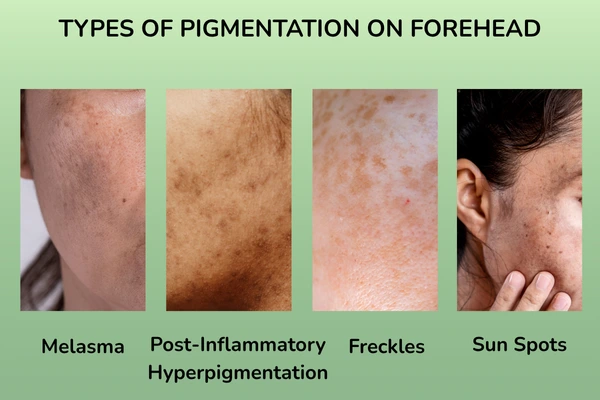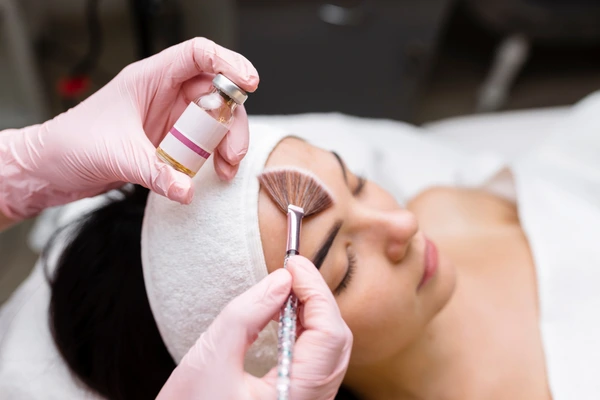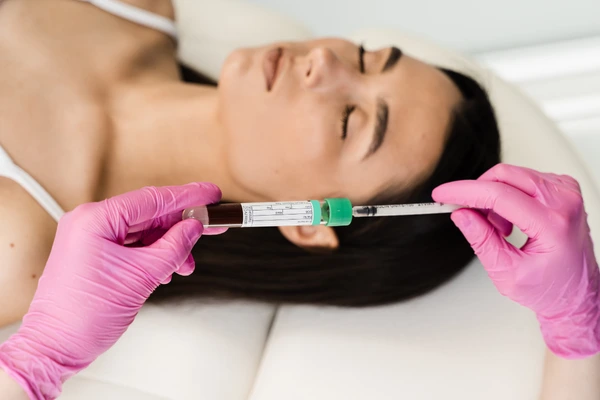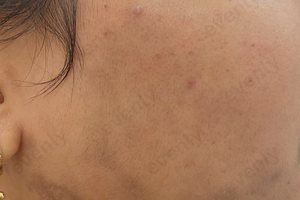Up to 25% OFF on Selected Treatments
-
Treatments
Acne and Scar
Pigmentation
Laser Hair Reduction
Dermato-surgery
Body
Anti Aging
Skin Rejuvenation
Others
- Clinics
- Blogs
Treatments
Have you ever noticed your forehead looking darker than the rest of your face? Maybe it shows up as uneven patches, stubborn spots, or a dull shadow that just won’t go away even after applying many facial creams. This is more common than you think, and it often leaves people wondering what is really happening with their skin. But the truth is forehead pigmentation causes range from sun exposure, acne scars, and hormonal changes to everyday lifestyle habits. With expert dermatological support and the right treatment, your skin can return to its natural state smoothly.
Forehead pigmentation affects both men and women, often impacting facial appearance and self-confidence. Since the forehead is one of the most noticeable areas of the face. That’s why seeking professional help is essential, as every skin type requires a customized approach, and not all treatments work the same for everyone.
In this expert guide, we will break down the most common forehead darkness causes, explain how dermatologists diagnose the condition, and share the advanced forehead pigmentation treatment options that truly work for forehead darkness. Keep reading to have a complete understanding of why it happens and how to restore your natural and clearer skin with professional help.
Forehead pigmentation is not just a skin concern; it is the skin’s way of responding to internal and external triggers. The pigmentation on the forehead is determined by the melanin accumulation. To treat it effectively, we should first understand the types and underlying forehead pigmentation causes.
Not all pigmentation on the forehead is the same. At Evenly Clinic, our dermatologists carefully classify the pigmentation before recommending any solution.

One of the most common reasons for forehead pigmentation is melasma. Manifests in the form of symmetrical brown or grey patches spreading over the forehead and cheeks. It is strongly linked to sunexposure, hormonal fluctuations, pregnancy
If you have had acne, rashes, or any injury on the forehead, the skin may heal with dark patches known as PIH. These spots can be brown, red, or even purplish, depending on your skin tone. Unlike melasma, PIH usually fades with the right forehead pigmentation treatment but can persist without care.
Skipping sunscreen during regular sun exposure can trigger flat, dark brown marks on the forehead, also called liver spots or age spots, and they tend to appear more in people older than 30. Since the forehead is often uncovered, it becomes a prime site for such forehead darkness causes.
Some people naturally develop freckles due to genetics. These tiny brown spots get darker with sun exposure and often appear on the forehead, nose, and cheeks. While harmless, freckles can become more noticeable over time and may be mistaken for other pigmentation types.
Each type of pigmentation has a different root cause, depth, and treatment plan. For example, melasma responds better to medical treatments like chemical peel and laser toning, whereas PIH may improve faster with topical creams, chemical peels and laser toning. A proper diagnosis ensures your forehead pigmentation treatment is targeted and effective.
Must Read: How to Reduce Melanin in the Skin: Achieve Clear & Brighter Complexion
Lifestyle & External Triggers
Every case of pigmentation is different; even if two people have the same darkness on their forehead, the forehead pigmentation causes may not be the same. That’s why self-diagnosis or random over-the-counter creams rarely work. At Evenly Skin & Hair Clinic, our dermatologists follow a systematic approach to find the exact cause before planning your forehead pigmentation treatment.
Your dermatologist will ask about:
The dermatologist examines:
Our dermatologist combines all findings to provide a personalized diagnosis. This ensures that the forehead pigmentation treatment recommended addresses your specific cause and prevents recurrence.
After identifying the causes of forehead darkness, the dermatologist moves on to suggesting the most suitable treatment plan. At Evenly Clinic, our dermatologists design personalized solutions that combine advanced technology to deliver safe and lasting results.
For mild to moderate pigmentation, dermatologist-prescribed creams are the first line of treatment. These work by reducing melanin production and improving skin turnover. Commonly used agents include:
Creams and prescription formulas are precisely dosed, making them more effective and safer for long-term use.

Chemical peels are an effective forehead pigmentation treatment for patients with superficial patches and uneven tone. By exfoliating the upper skin layers, peels encourage fresh, evenly toned skin to resurface.
Multiple sessions, spaced a few weeks apart, are usually recommended for best results.
Laser technology offers precise targeting of pigmented cells without harming surrounding skin. At Evenly, our dermatologists use USFDA-approved laser technology—Q-switched ND YAG laser—for forehead darkness caused by conditions like melasma, sun damage, and post-inflammatory pigmentation. We also provide fractional CO₂ laser resurfacing treatment, which stimulates collagen production while addressing deep pigmentation.
Laser treatments are safe, quick, and show visible improvements after a few sessions.
Must Read: Chemical Peel or Laser Treatment for Pigmentation: Which is Best for You?

Microneedling creates controlled micro-injuries in the skin, allowing brightening serums or Platelet-Rich Plasma (PRP) to penetrate deeper. This boosts skin healing, reduces pigmentation, and improves overall skin health.
Must Read: Microneedling with PRP: Benefits and What to Expect
Even after undergoing the right forehead pigmentation treatment, preventing recurrence is just as important as correcting existing patches. Since many forehead darkness causes are triggered by lifestyle habits, hormones, and sun exposure, following a dermatologist-recommended care plan is essential. That’s why dermatologists at Evenly always combine treatments with:
Make it a routine to use broad-spectrum sunscreen (SPF 30–50), while also wearing sunglasses and a hat for enhanced protection.
Dealing with forehead pigmentation can be overwhelming, especially when creams, home remedies, and over-the-counter solutions fail to deliver results. What’s important to remember is that forehead pigmentation causes vary from person to person, ranging from sun exposure to hormones, genetics, or even lifestyle habits. That’s why the right forehead pigmentation treatment must be carefully chosen after a dermatologist’s evaluation.
Modern dermatology offers advanced solutions like laser toning treatment, chemical peels, and prescription-based regimens that go beyond temporary fixes. At Evenly Clinic, our dermatologists combine medical expertise with cutting-edge technology to address not just the forehead darkness causes but also prevent recurrence for lasting skin clarity.
Your skin deserves specialized care. Instead of hiding forehead pigmentation or darkness with makeup, consult an expert who understands both the science of skin and the psychology of confidence. Book your appointment with Evenly Skin & Hair Clinic today, and take the first step towards brighter, healthier, and even-toned skin.


Evenly Skin and Hair Clinic – HSR Layout
Third Floor, 815, 27th Main Rd, above Bluestone, 1st Sector, HSR Layout, Bengaluru, Karnataka 560102
Evenly Skin and Hair Clinic – Jayanagar
35, Ground Floor, Vinyas Arcade, 11th Main Rd, Vishya Bank Colony, 5th Block, Jayanagar, Bengaluru, Karnataka 560041
Evenly Skin and Hair Clinic – Indira Nagar
1st Floor, 134, Above Namdhari’s Fresh, 1st Main Rd, 2nd Stage, Domlur, Indiranagar, Bengaluru, Karnataka 560071
For health-related information, follow us on Instagram!!
Is forehead darkness a sign of any health issue?
Yes, sometimes. Many cases are associated with sun exposure, hormonal changes, and nutritional deficiencies. An experienced dermatologist can help rule out any medical concern.
Is laser toning treatment safe for forehead pigmentation?
Yes, when performed by an expert doctor, laser treatment is safe and effective. It works by targeting excess melanin in the skin, reducing darkness/pigmentation without damaging surrounding areas.
How do I know it’s time to visit a dermatologist for forehead pigmentation?
If pigmentation doesn’t improve with any skincare products or it is spreading or getting dark day by day, it is best to consult a dermatologist.
Who is more likely to develop forehead pigmentation – men or women?
Both men and women can develop forehead darkness, but women are more prone due to hormonal fluctuations. In men, sun exposure will be the main cause in most cases.
Can forehead pigmentation spread all over a face?
Yes, melasma and post-inflammatory hyperpigmentation can spread beyond the forehead if not addressed at the right time. That’s why timely treatment is essential.
We hope this information is helpful. If you have any skin and hair-related questions or would like to discuss personalized solutions, please reach out to us at 7337899030. Our team of specialists is committed to delivering personalized care tailored to your specific needs. Take the first step towards a healthier, more confident you by scheduling a consultation with us today. Your journey to vibrant skin and stronger hair begins here.
Book an Appointment
Start your journey to healthy skin and hair today.
Leave a Comment